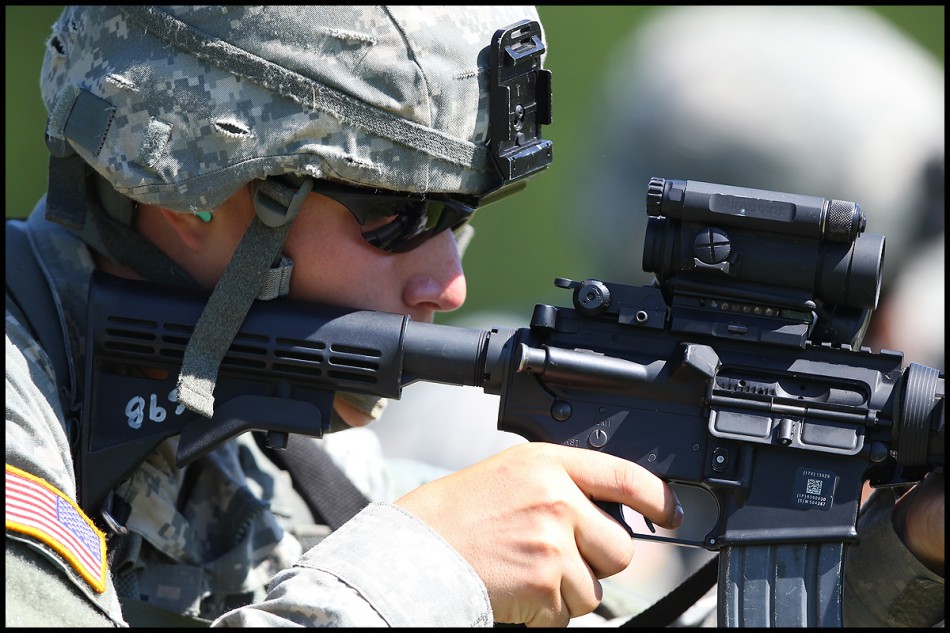
When school lets out for the summer around the U.S., it’s time for sleeping late, BBQ’s and the beach for most college kids. At West Point, an early morning march out to Range 11, outside Camp Buckner, is the schedule on this warm, sunny Friday morning, the first one of July.
I had the chance to tag along with a few hundred of these dedicated cadets from the U.S. Military Academy this past week for a morning that included a crash course in operating an M4 Carbine and a front-row seat for rifle marksmanship and urban ops training.
Range 11 is just down Rt. 293 from Camp Buckner in West Point, the center of the United States Military Academy’s annual cadet summer training. Cadets from various stages of their academic careers attend these programs, from the “beast” weeks of basic training for plebes to the advanced leadership training designed for the more senior cadets.
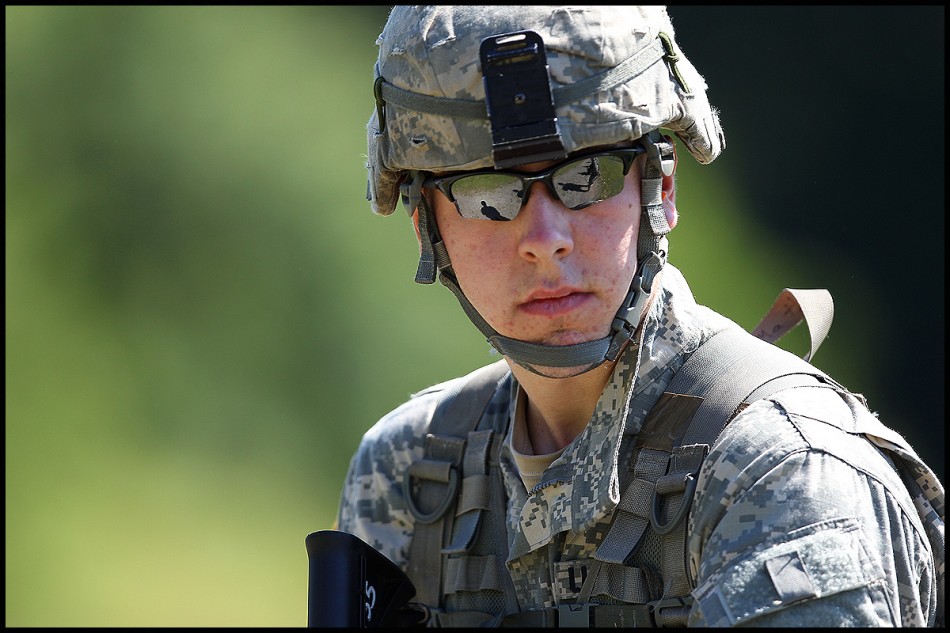
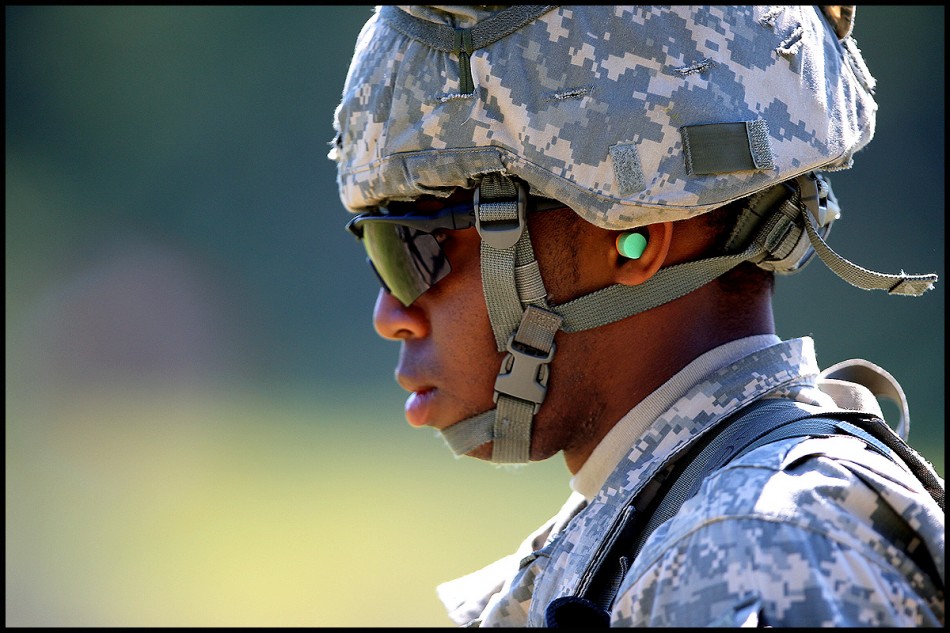
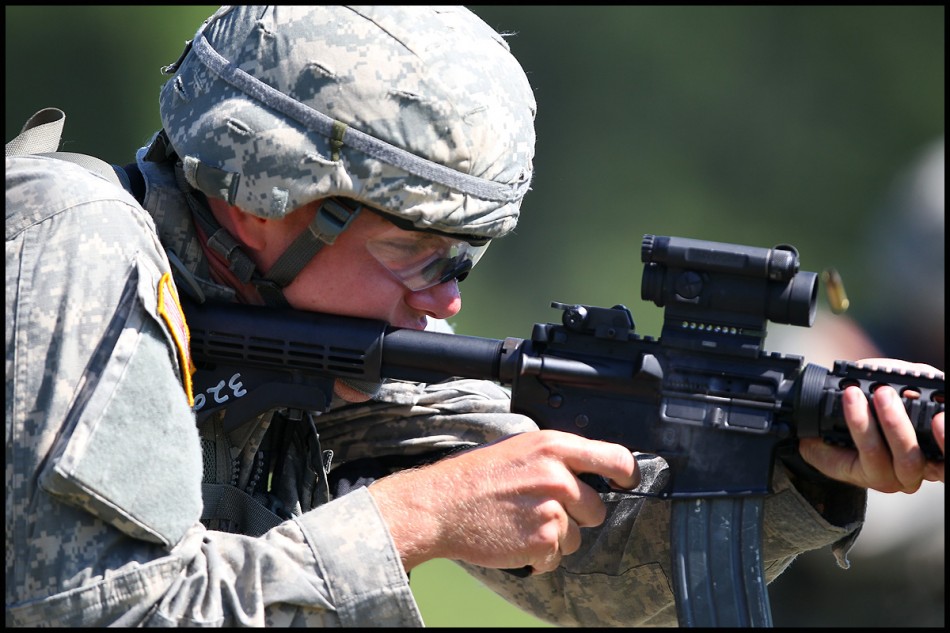
My afternoon with the cadets began with a ride out to the firing range in a hummer with Cadet Chris Klein and my buddy Tommy — Tommy has been shooting summer training daily for the past few weeks.
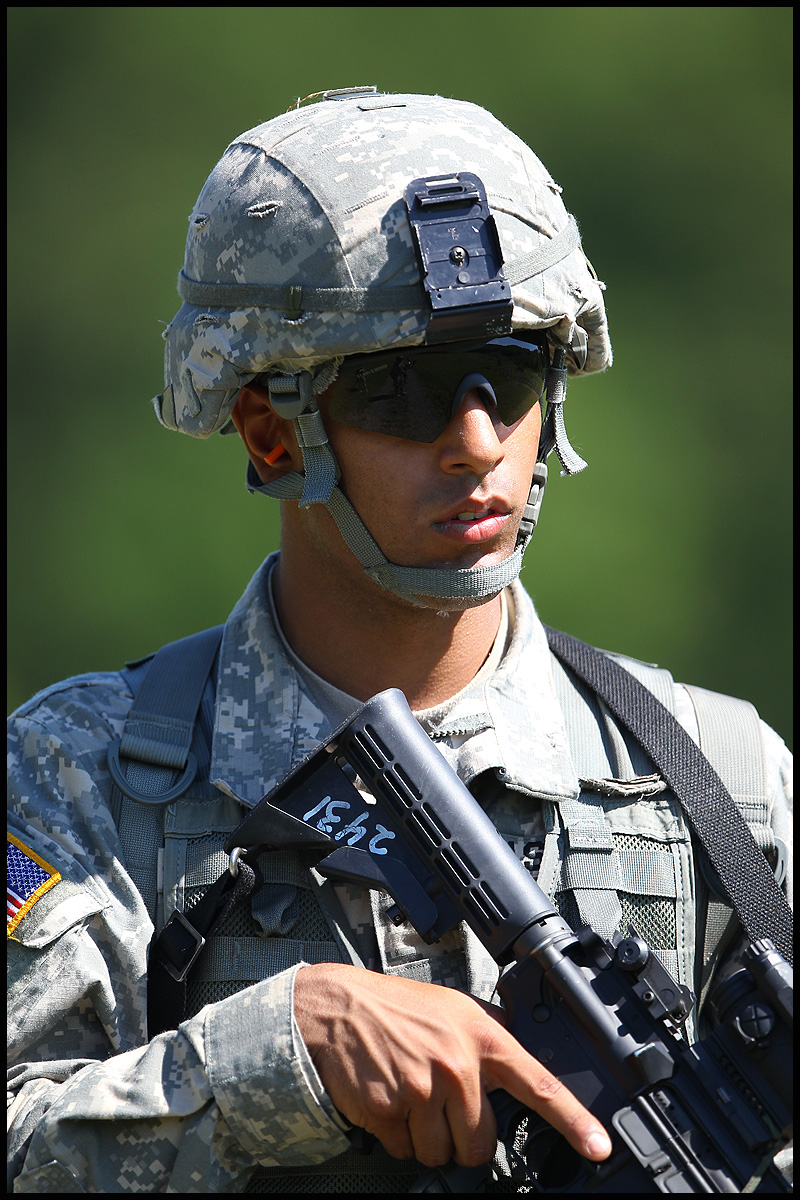
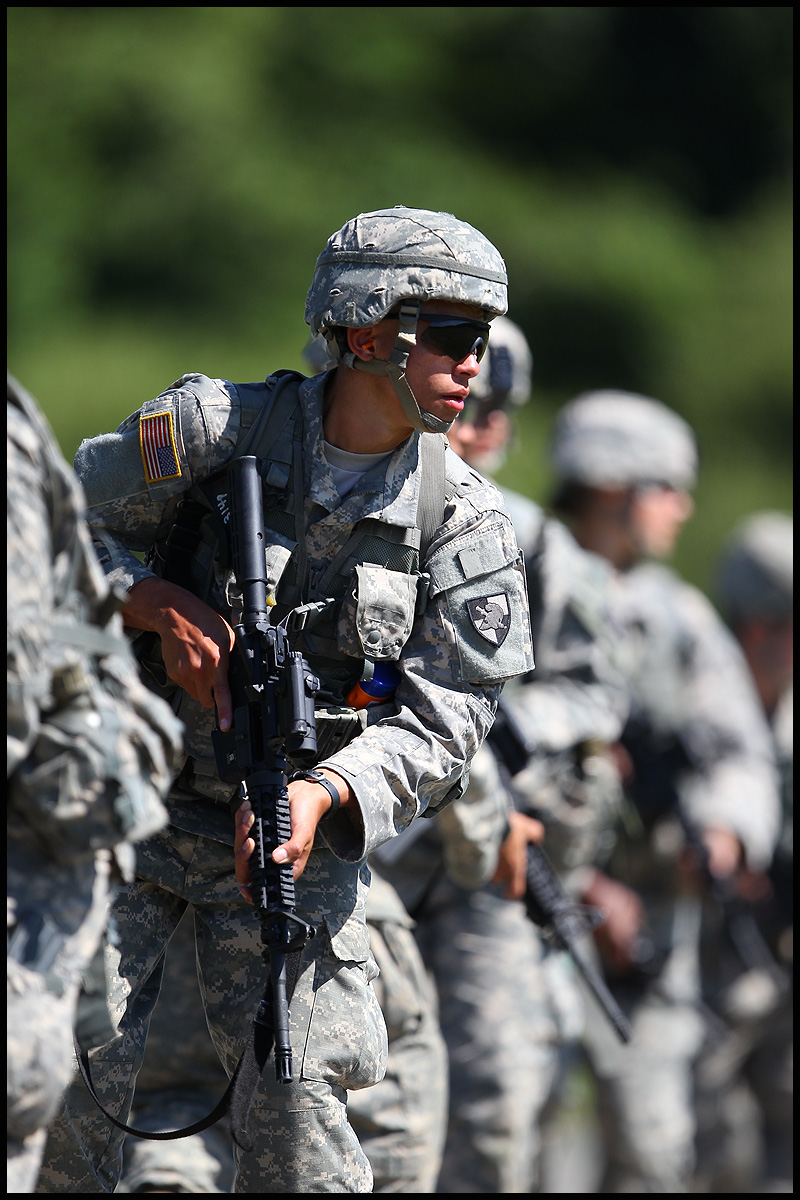
When we arrived, we met with the 8th Co. Commander, who invited us to participate in the live fire exercise the new squad was about to begin. He gave us a quick lesson in operating the rifle — an M4 Carbine with an M68 Close Combat Optic scope, or red-dot scope. The goal of the day’s firing exercises was to prepare for clearing small houses and structures (I wasn’t able to stay that long, since I had to go to work), so the cadets began the day by hitting targets from various distances while pivoting in place. The cadet pictured above was in the process of pivoting from his right toward the target,
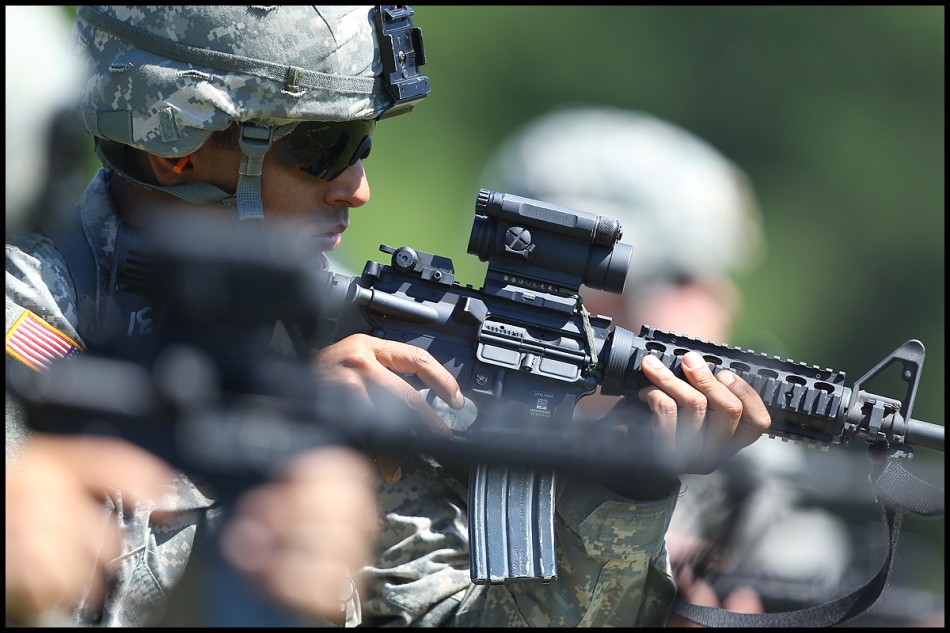
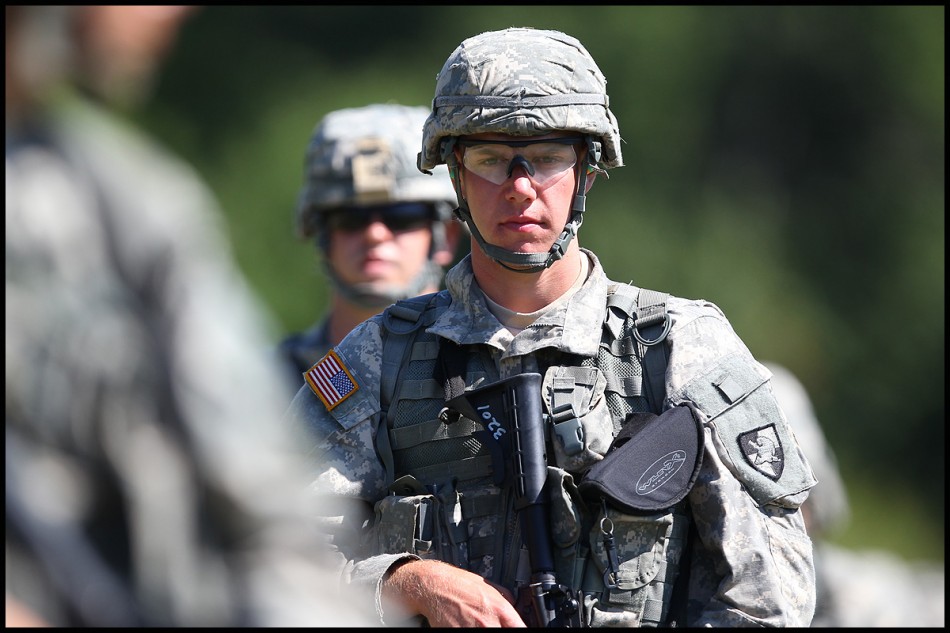
The pivoting and turning, along with the various areas of the targets they were tasked to hit, were considered advanced marksmanship. We had to shoot while slowly walking toward the targets, go down on a knee and shoot, spin 180 degrees and shoot, etc. Magazines, typically good for carrying 30 rounds, were fitted with 10 rounds each — this was by design, so cadets could get more practice reloading during fire.

Cadets (above) waited in line to collect their magazines. Tommy and I were told to keep our magazines in the cargo pockets of our shorts, which worked fine. We started off with a dry run facing an equipment shed, firing without bullets on command while turning to our left and right. The M4 has a few buttons and things to keep track of besides the trigger — a safety switch was the most important thing, it had to be on safety at all times unless firing the weapon. Even as we pivoted toward the target, it had to remain on safety. Cadets are instructed to flip the switch to semi-automatic in the same motion as they aim to fire. After a few times, I got the hang of it.
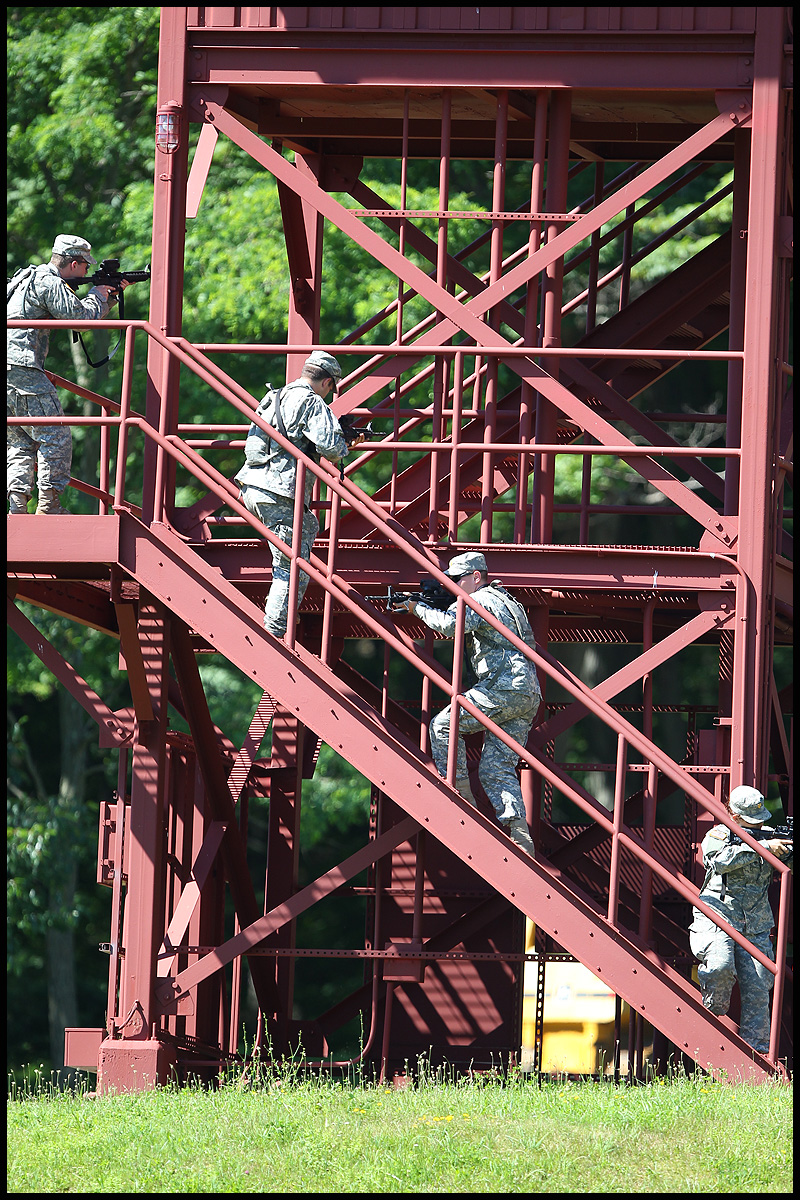
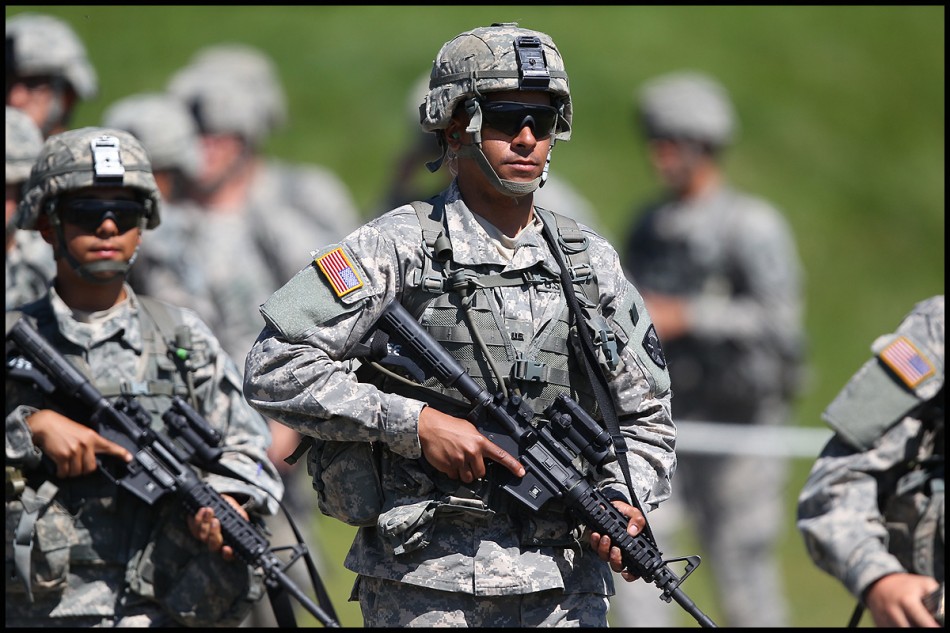
Cadets above carry their M4’s with their fingers off the trigger. It sounds simple, but it’s oddly tricky to force yourself to do. When you grip a gun of any sort, be that a rifle that’s been handed down through your family or a gun that you won in a gun giveaway contest, or any other gun, you just naturally put your finger on the trigger — it feels comfortable, you’re excited and you can’t wait to pull it. That’s an urge that needs to be fought. It took me a while to start carrying my rifle like above, with my finger straight out above the trigger. Rifles need to be handled carefully and with consideration. Whilst holding this important piece of kit as well as other specialized equipment, users need to be aware of how everything works so they can discharge it correctly. There are Rifle Scopes Center AR-15 scopes that can be attached to help with marksmanship if needed, but that is a discussion for another time.
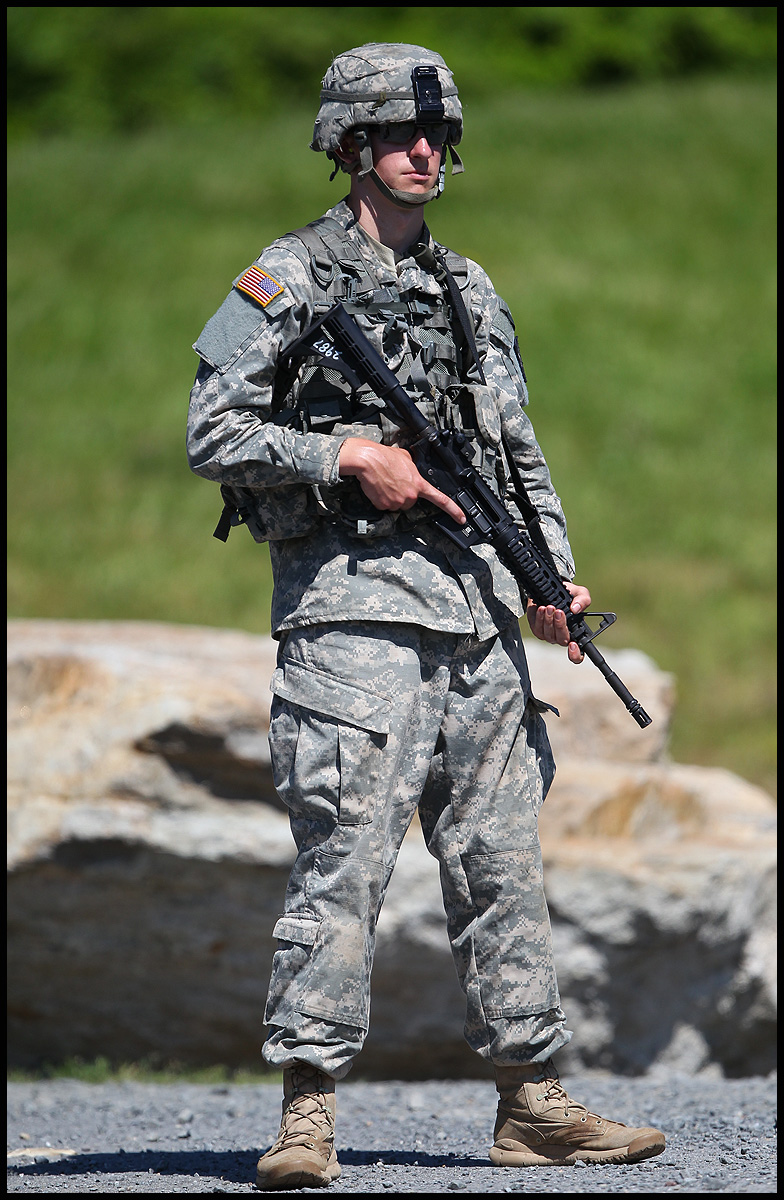
Keeping the M4 pointed down at all times was also imperative. Again, it’s another simple thing that you sort of need to have ingrained into your mind. Spinning around on command to aim was the trickiest aspect of this rule — you have to spin around completely with the rifle pointed down, rather than swinging it up as your turn.
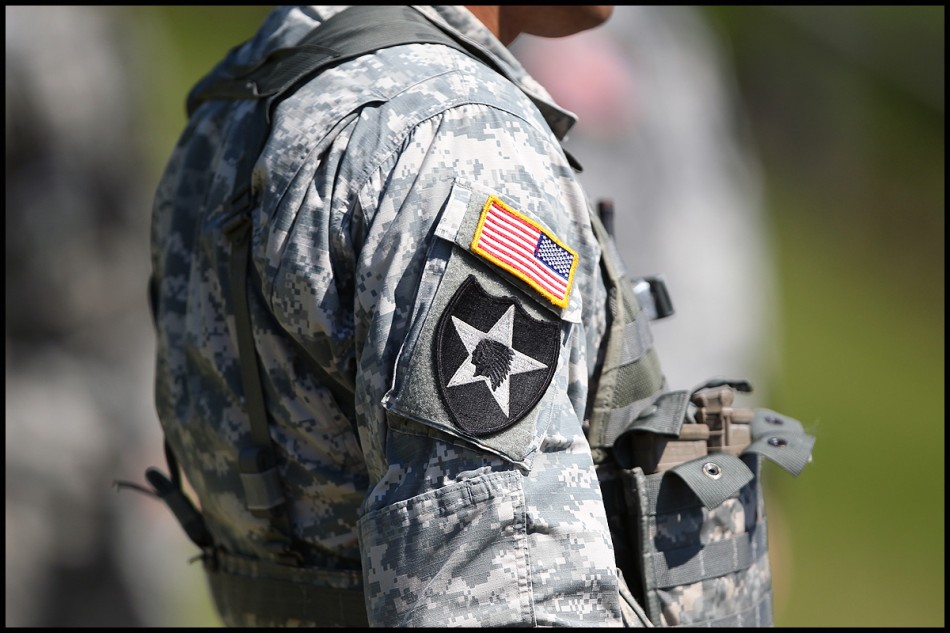
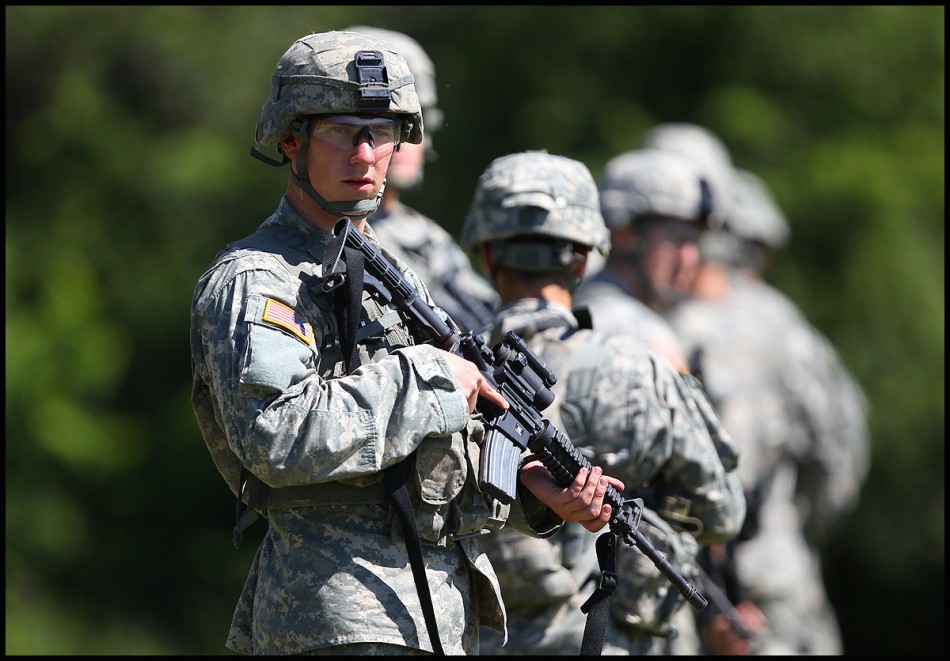
Firing the rifle was, obviously, awesome. The M4 has a nice solid kick to it when fired, but nothing that knocked me back, even as a novice. It has a telescopic stock, which a cadet pulled out for me — this area (the back of the rifle) fits snuggly against your right shoulder. Cadets are taught to face the target with both feet, one slightly in front of the other, and crouch slightly for solid balance.
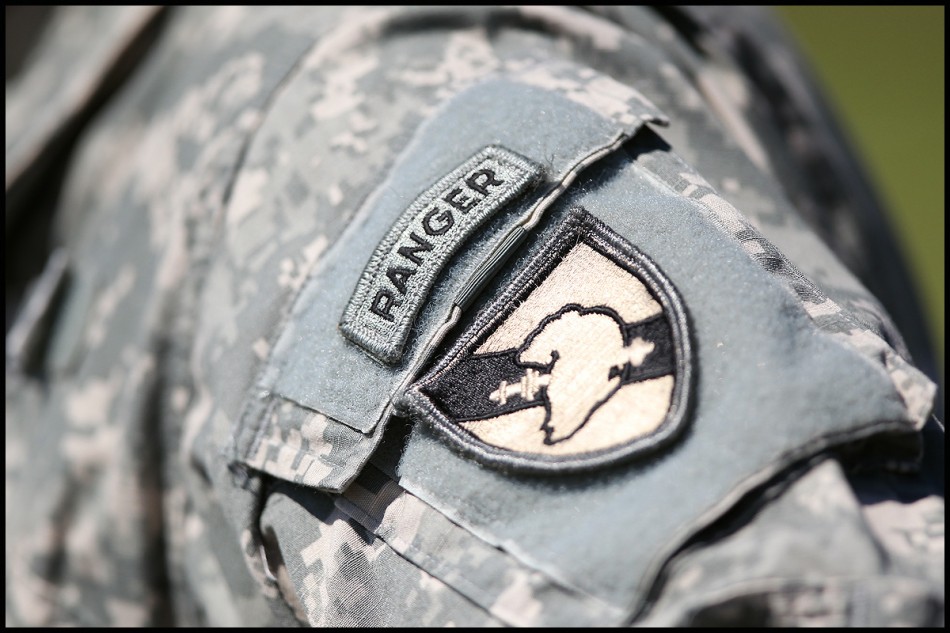
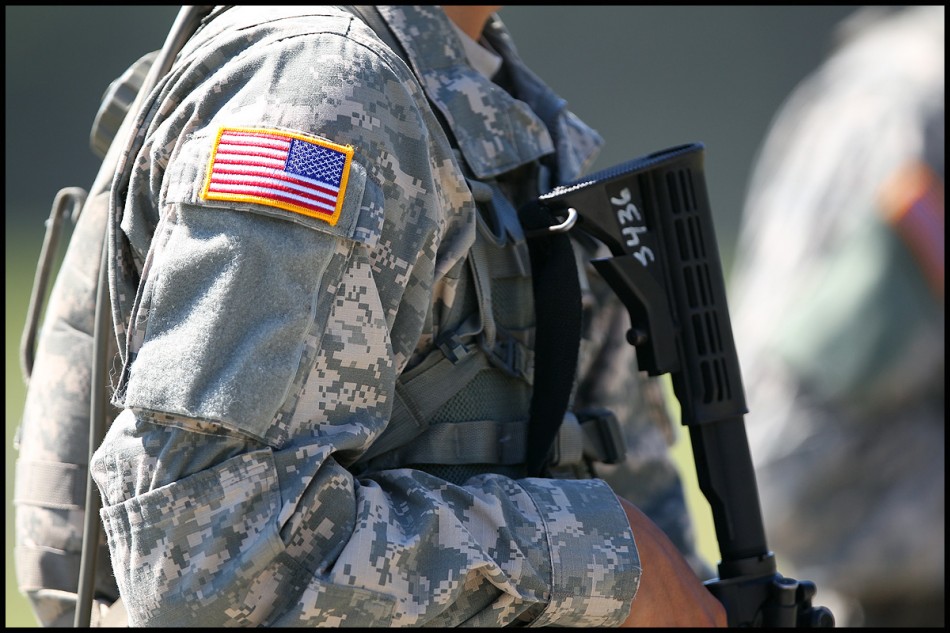

An instructor (above) barked out commands for the cadets. He would tell us all to turn one direction, raise our weapons and fire. Each cadet then fired off two or three rounds, spun around, pointed the gun down and flipped the safety back on.
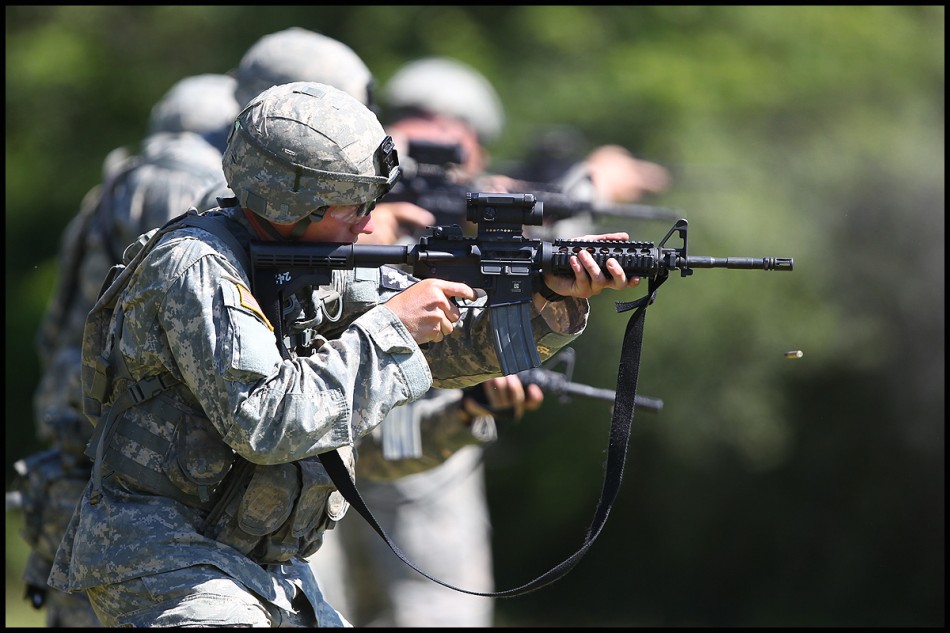
Reloading involved another two buttons. Once the bullets were used up, the gun just made a clicking sound when fired. A button on the right side of the rifle let the magazine fall to the ground — we had to take a knee to reload. The new magazine is then slid up into the rifle, bullets facing forward, and a button on the left locks it in. There was then a bolt on top of the rifle, behind the scope, that needed to be pulled back with two fingers to load the rifle. Now, you’re ready to roll.
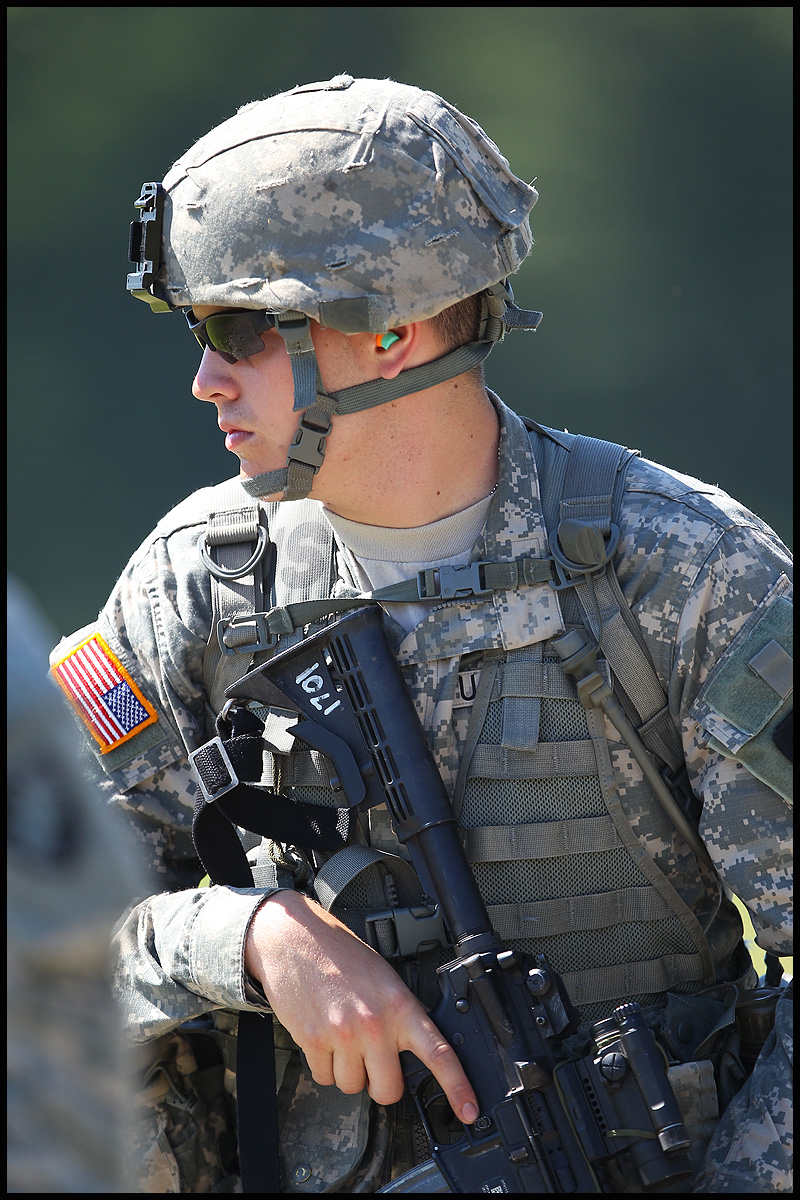
We all used these orange-and-green ear plugs, which helped reduce some of the sound coming from the M4’s. When you have 100 cadets firing at once, it kind of sounds like fireworks going off.
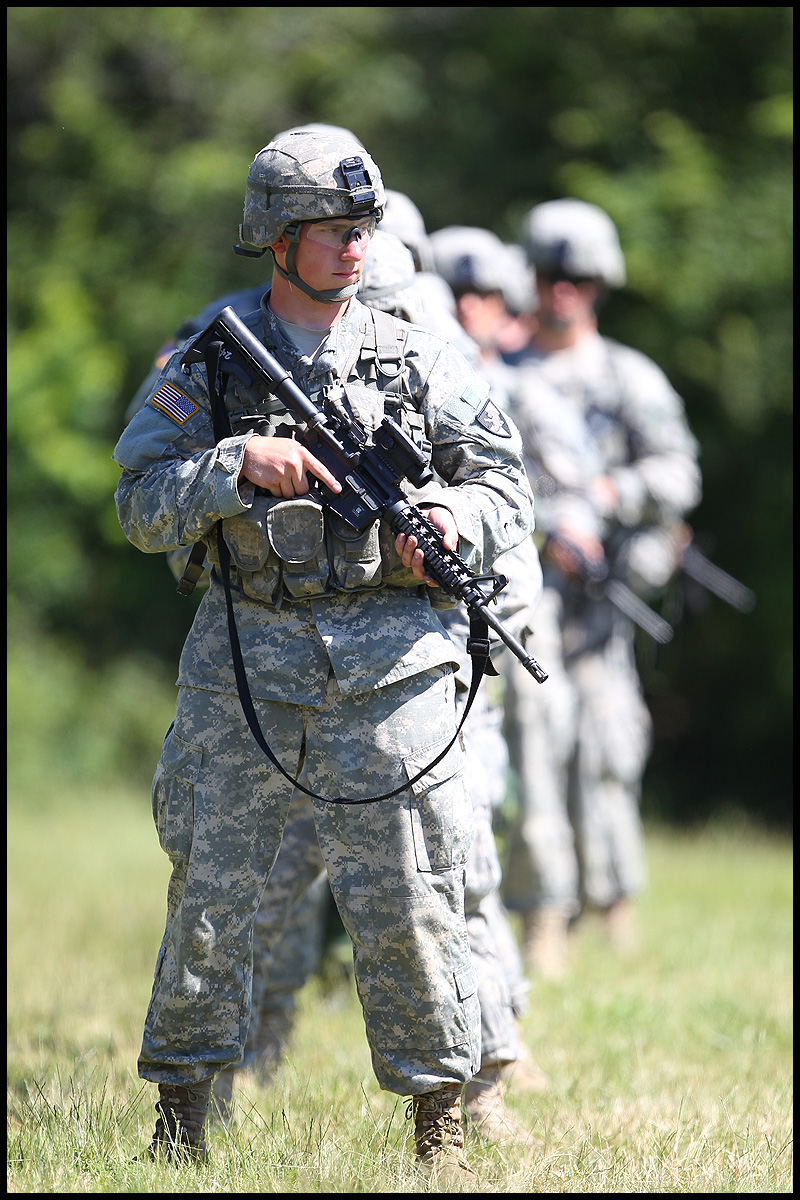
The scope was really cool — from the front, it looks totally red. From the user’s position, you can see a small bright red dot in the middle of the scope. When held straight, it lines up with the iron sights on the M4’s barrel. I’d never shot a gun in my life outside a Tippman paintball gun that I found on a website similar to propaintball.com, which is wildly inaccurate. The M4? Nearly perfect. I hit the target on all 50 shots I fired, 48 of them within the rings. The majority of my shots were within the small black “bulls-eye” area in the center. I was pretty damn impressed with myself, and I was able to keep the target sheet for proof. Hours of playing Call of Duty have, evidently, paid off.
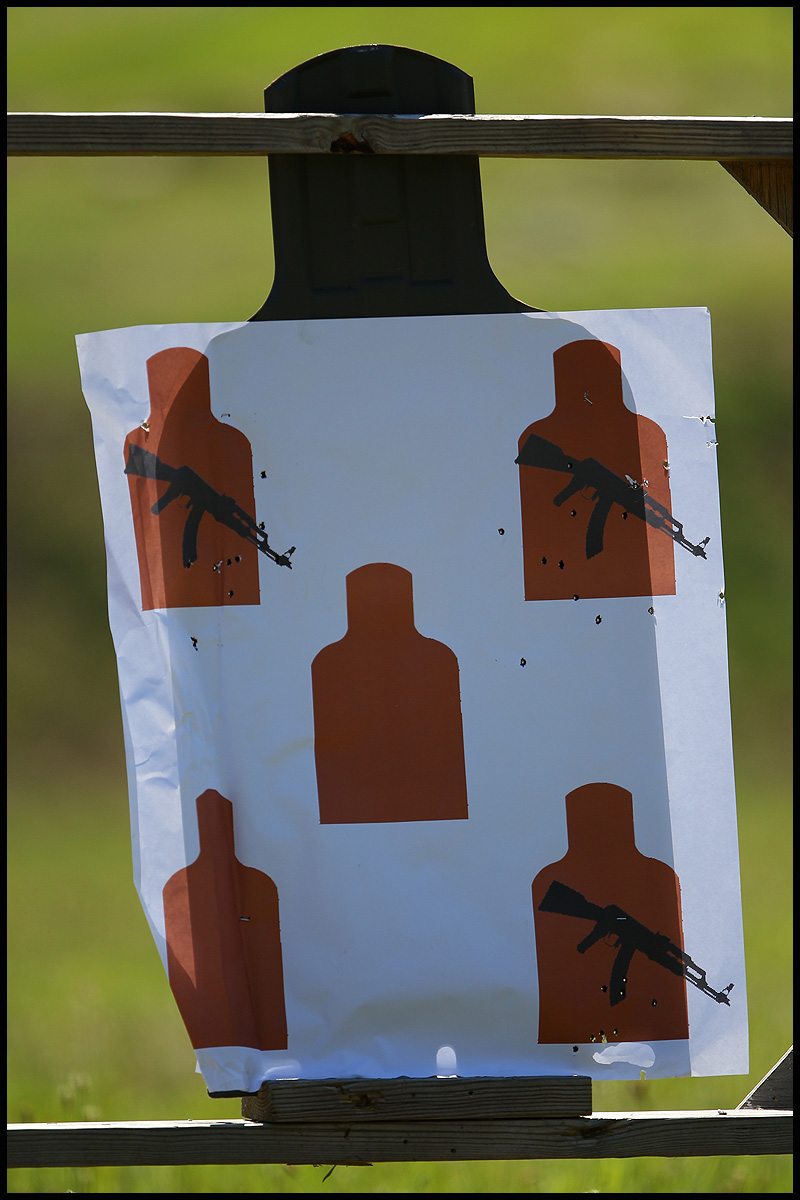
This, though, was the target sheet the cadets were tasked to hit, rather than the traditional circle targets Tommy and I had. The targets vaguely resemble an enemy body silhouette holding an AK-47 rifle. Those, obviously, were the targets the had to aim for.
I learned a lot — a cadet told me that the M4 is basically exclusively utilized by the Army in semi-automatic mode, meaning one bullet at a time. The M4, which is basically a newer, lighter, modified version of the M16, also has a burst mode (three bullets are fired), although the Army strongly discourages using the mode. I was told that the first two bullets tend to be on target, while the third always hits the ceiling (or goes way off target outside). Thus, there’s no purpose in wasting bullets in combat — one at a time is more accurate and efficient.
Then, you have the exact opposite.
The enemy weapon of choice in Iraq and Afghanistan is the AK-47, which is less accurate. A cadet told me that many soldiers have wised up to it’s tendencies — since many of the enemies they encounter are not properly trained to fire their rifles, they lack good aim. They’ve found most times the shooter’s rounds drift up and to the right of their target, so soldiers are taught that, when being fired upon, to move to their right.
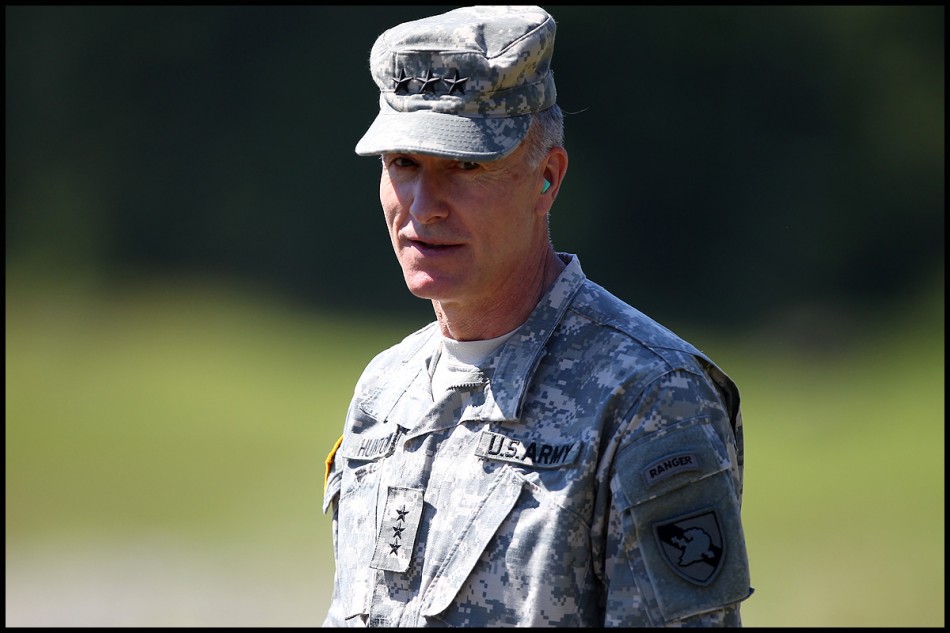
Lt. Gen. David H. Huntoon Jr., the 58th Superintendent of the U.S. Military Academy, drove down to the range to see the cadets in action. I had a chance to meet Gen. Huntoon for a moment, which was a great honor.

After shooting the weapon, and then shooting the cadets (with my 400mm lens), we drove over to Camp Shea, where cadets were in the beginning stages of an urban ops exercise. Later in the day, cadets would overtake a nearby village and clear the buildings, room by room. We briefly drove through the village — small one and two-story buildings, spray-painted with Arabic words and symbols to mimic the combat zones of Iraq and Afghanistan.
These cadets, though, were in a field of tall yellow grass, clearing imaginary rooms that were outlined with white tape. They had BFA attachments on their M4’s — a blank-firing attachment/adaptor — on the end of the barrel, which lets the user fire a blank.
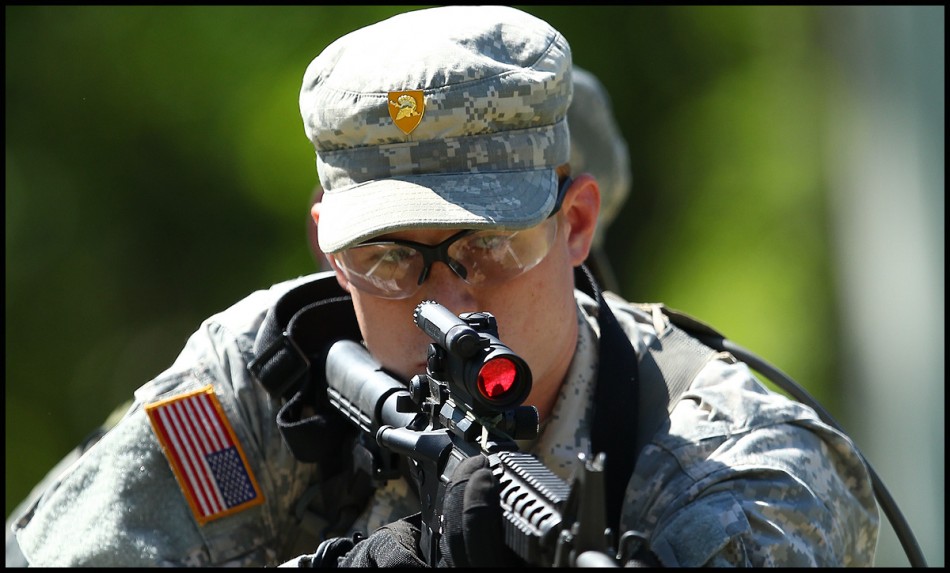
You can see the M68 CCO scope above, from the business side.
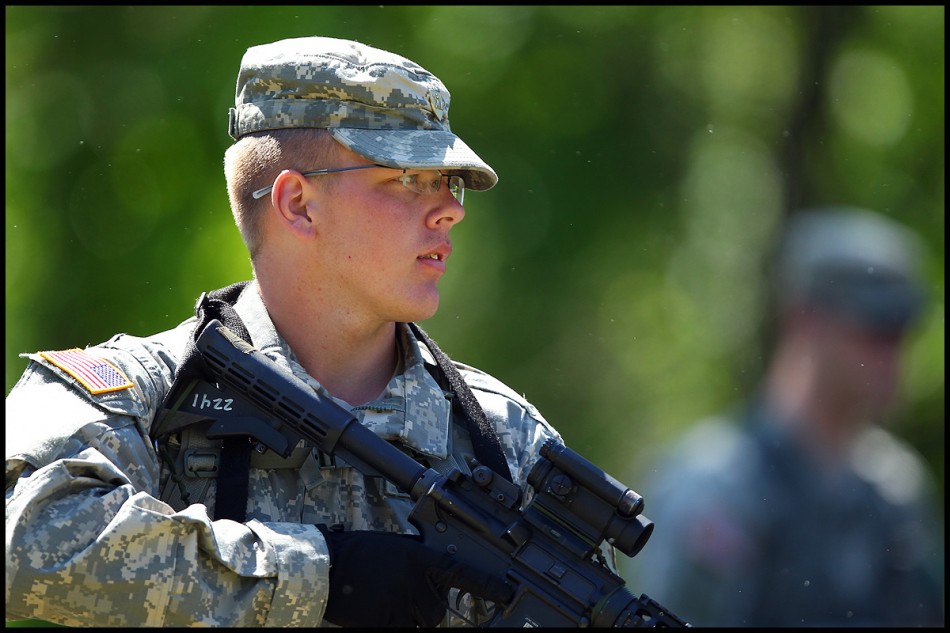
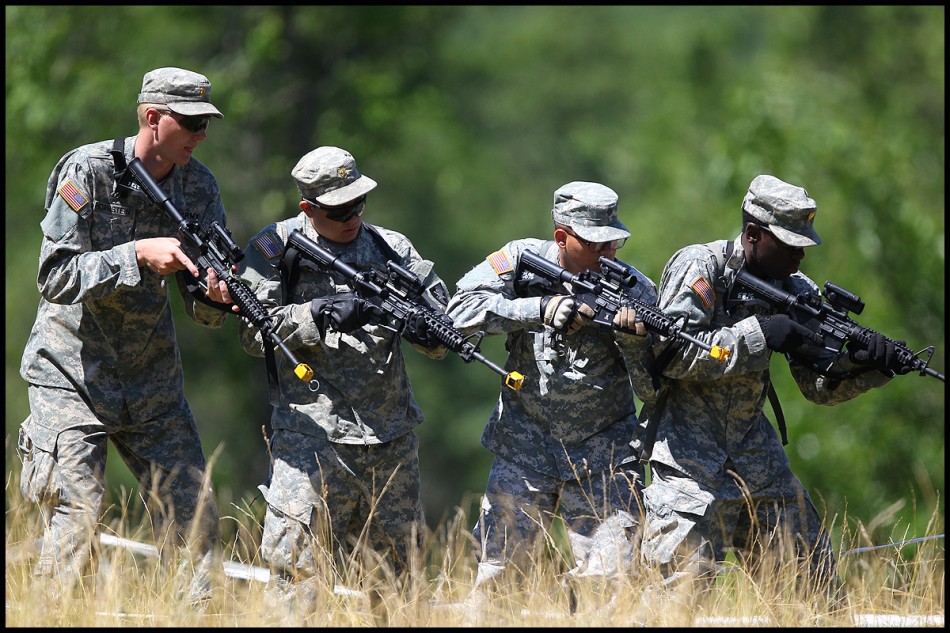
Tommy had gotten some nice early-morning shots with light hitting the tall grass a few weeks ago, and I wanted to see if I could get anything similar. I always shoot from a low position anyway, though.
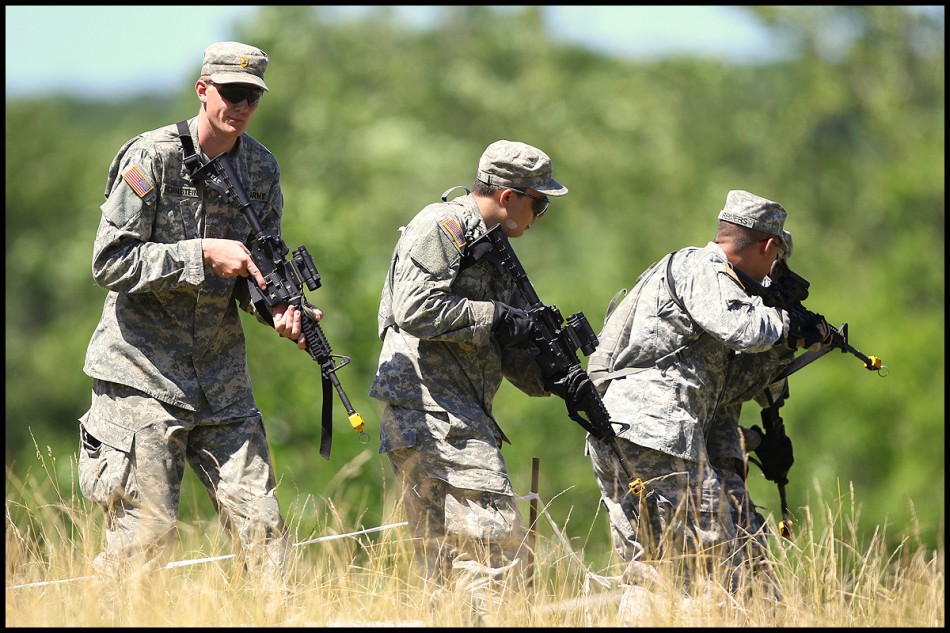
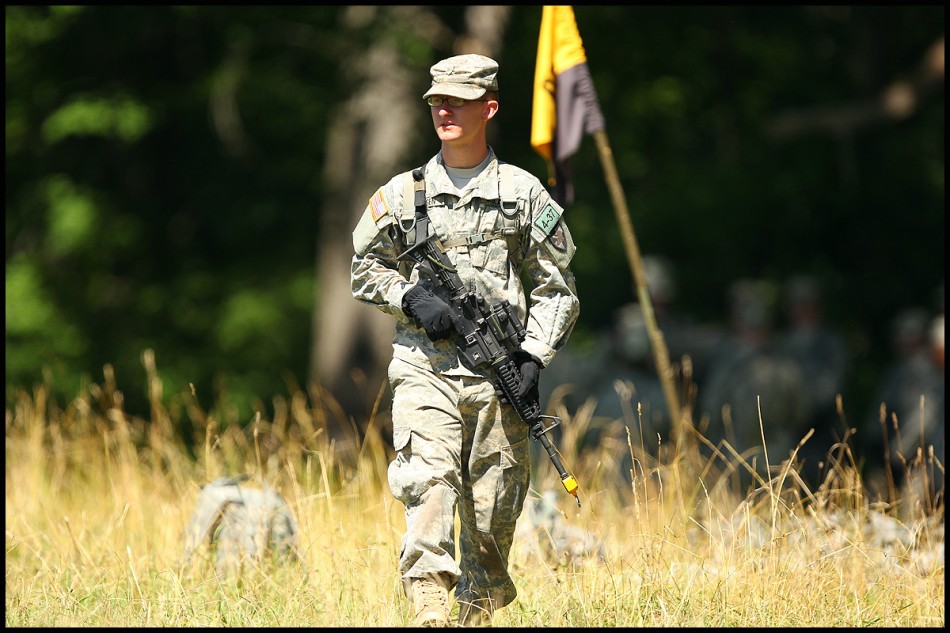
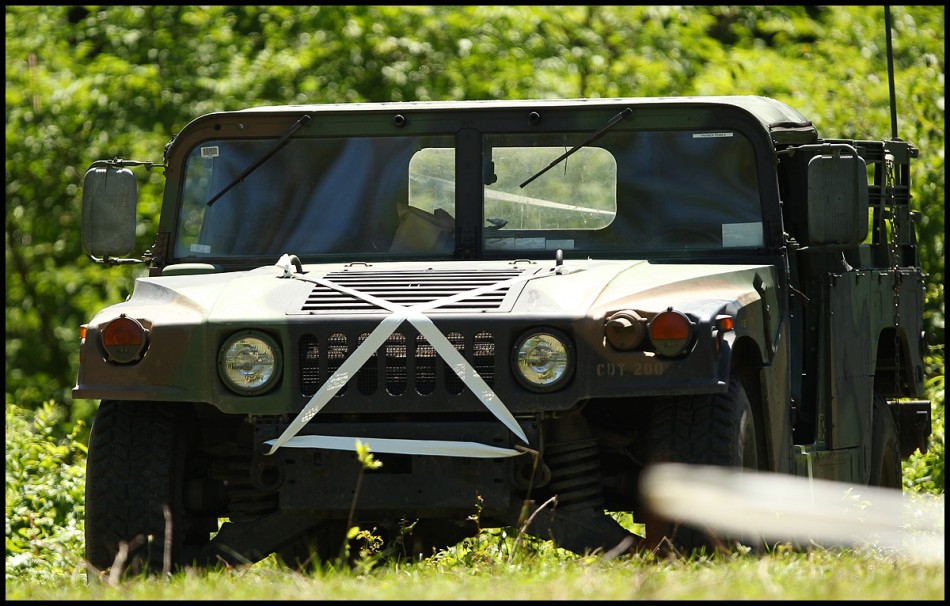
This was our ride for the morning, a camo hummer. The back seat was surprisingly small, and the doors were a heavy canvas with plastic zip-down windows. Our drive had to chalk the tires (place a piece of wood in front of the back tires) when we parked. Below is a look inside the hummer on our way out of Camp Shea. It was bumpy and loud and predictably really fun.
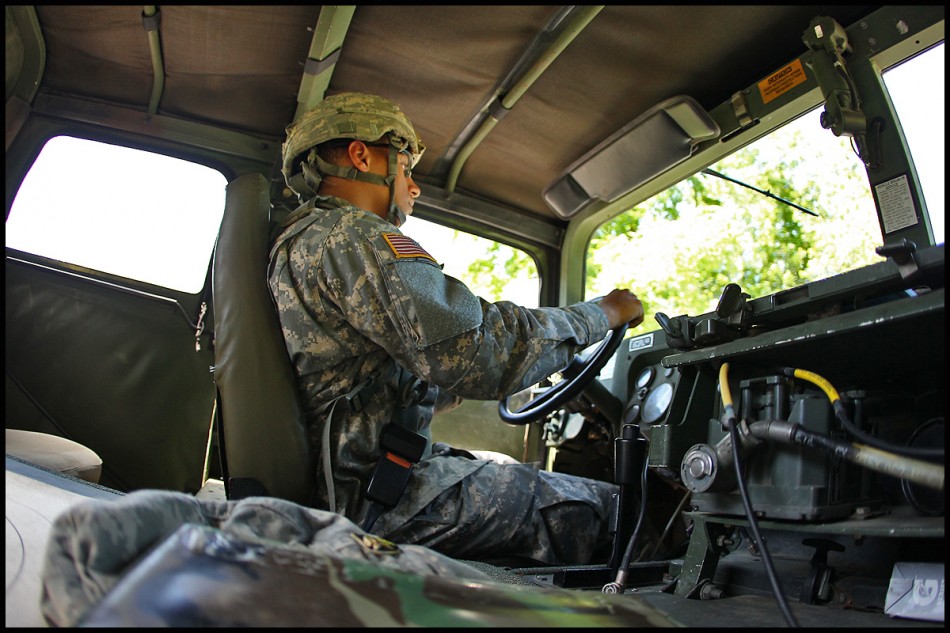
More photos from my trip are available here. Many of Tommy’s shots are available here.
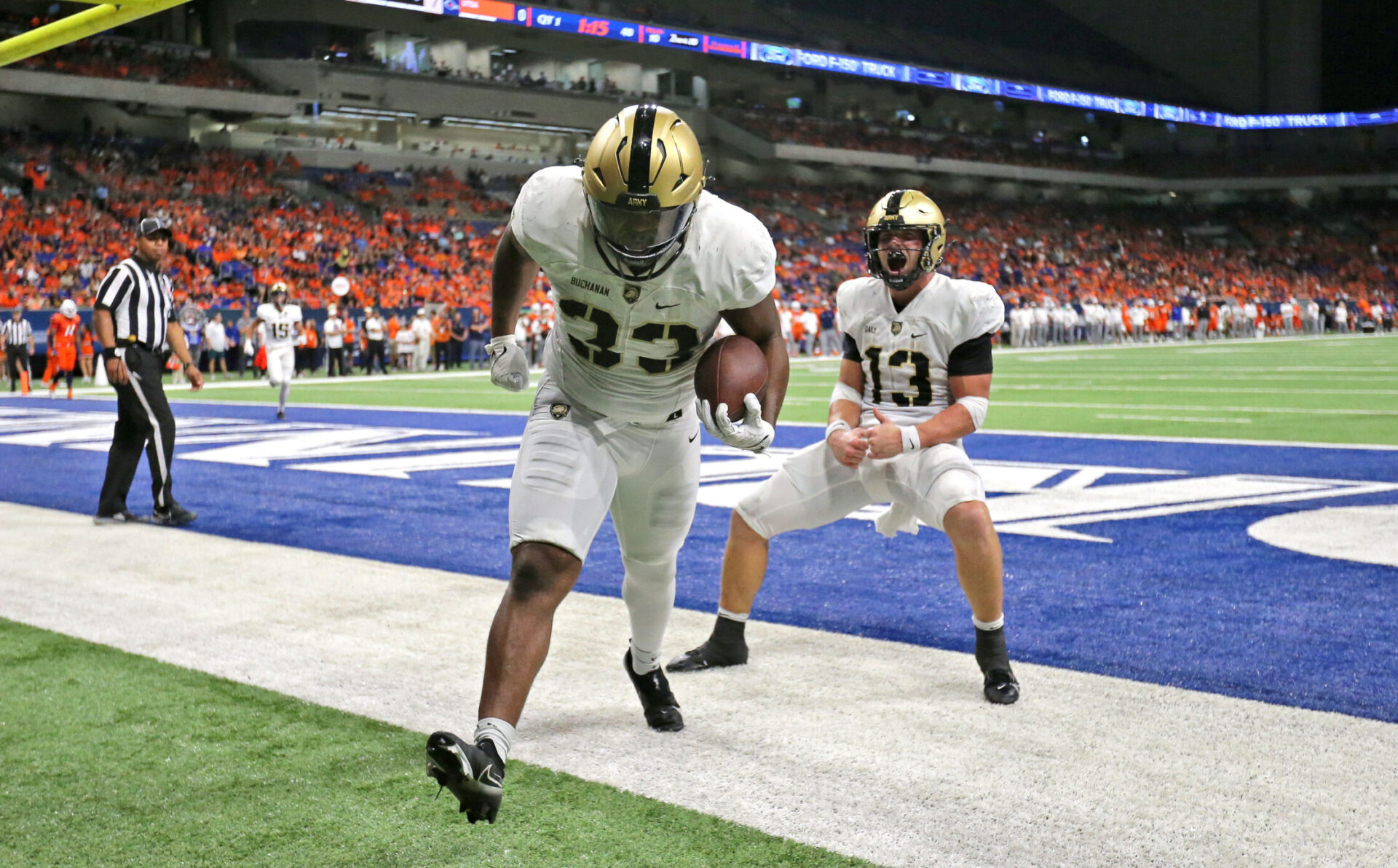
Awesome pics as usual, Danny.
Thanks David! Appreciated!
Its good to see a real world focus at WP. Very different from when I was a cadet. Plus there is no way in hell I would’ve been allowed to wear the cool sunglasses. Great pix and story.
thanks Greg, glad you were able to check ’em out. I’m guessing eye wear was mandatory for this — it seemed like if they didn’t have sunglasses, they had similar clear glasses. In some of the training now I believe they have actual people from Iraq and Afghanistan in the village areas
-Danny
I’m so jealous! I wish I could be there to take pictures as well.
Wonderful Pictures!!!!!!!!!!
Thanks!!!
thank you, glad you found them and enjoyed ’em!
-Danny